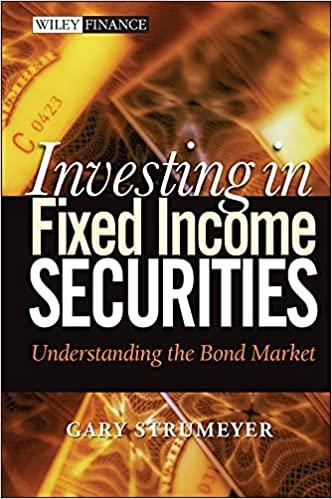Answered step by step
Verified Expert Solution
Question
1 Approved Answer
B. Sara invests $200 in the risk-free asset, $400 in stock A and $400 in stock B; Brian invests $300 in the risk-free asset, $350
 B. Sara invests $200 in the risk-free asset, $400 in stock A and $400 in stock B; Brian invests $300 in the risk-free asset, $350 in stock A and $350 in stock B. C. Sara invests $400 in the risk-free asset, $300 in stock A and $300 in stock B; Brian invests $300 in the risk-free asset, $350 in stock A and $350 in stock B. D. Compared to Brian, Sara puts a smaller fraction of her total investment money into the riskfree asset. 12. Investors in a stock require a risk premium as compensation for bearing the risk A. that the CEO of the company dies suddenly B. that an employee in the company makes a technical mistake causing the factory to shut down C. that inflation will rise over the next 3 years D. A, B and C are all correct. 13. Stock A has an expected return of 14% and volatility of 16%. Stock B has an expected return of 18% and volatility of 20%. Suppose that investors cannot form portfolios, which stock would Ann prefer if her utility function is: U=E(R)1/2A2 and her coefficient of risk aversion is equal to 3. A. Stock A B. Stock B C. Stock A and stock B are equally attractive to Ann. D. Not enough information is provided. 14. Consider the CAPM. The risk free rate is 2%. The market portfolio has an expected return of 10%. Stock X has a fair expected return less than 2%. The beta of stock X should be A. higher than 1 . B. higher than 0.5
B. Sara invests $200 in the risk-free asset, $400 in stock A and $400 in stock B; Brian invests $300 in the risk-free asset, $350 in stock A and $350 in stock B. C. Sara invests $400 in the risk-free asset, $300 in stock A and $300 in stock B; Brian invests $300 in the risk-free asset, $350 in stock A and $350 in stock B. D. Compared to Brian, Sara puts a smaller fraction of her total investment money into the riskfree asset. 12. Investors in a stock require a risk premium as compensation for bearing the risk A. that the CEO of the company dies suddenly B. that an employee in the company makes a technical mistake causing the factory to shut down C. that inflation will rise over the next 3 years D. A, B and C are all correct. 13. Stock A has an expected return of 14% and volatility of 16%. Stock B has an expected return of 18% and volatility of 20%. Suppose that investors cannot form portfolios, which stock would Ann prefer if her utility function is: U=E(R)1/2A2 and her coefficient of risk aversion is equal to 3. A. Stock A B. Stock B C. Stock A and stock B are equally attractive to Ann. D. Not enough information is provided. 14. Consider the CAPM. The risk free rate is 2%. The market portfolio has an expected return of 10%. Stock X has a fair expected return less than 2%. The beta of stock X should be A. higher than 1 . B. higher than 0.5 Step by Step Solution
There are 3 Steps involved in it
Step: 1

Get Instant Access to Expert-Tailored Solutions
See step-by-step solutions with expert insights and AI powered tools for academic success
Step: 2

Step: 3

Ace Your Homework with AI
Get the answers you need in no time with our AI-driven, step-by-step assistance
Get Started


